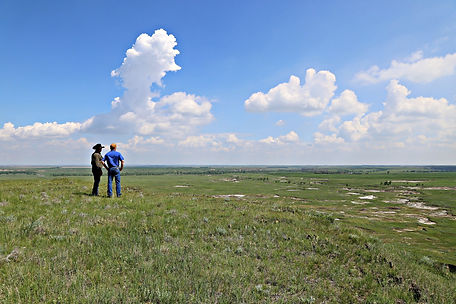
About
Locally Led Conservation
Locally-led conservation is based on the principle that local people make the best decisions for their own communities. This was recognized in 1937 as local conservation districts were created to address natural resource concerns. Today, South Dakota's 69 Conservation Districts work together with the USDA Natural Resources Conservation Service through a locally-led process.
The Locally Led Project was started in 2018 to promote locally-led conservation initiatives that build healthy soils, improve water quality, provide wildlife habitat, and improve the environmental and economic performance of working lands across South Dakota's 31,000 farms and ranches.
WHAT
IS LOCALLY LED CONSERVATION?
Locally led conservation is the involvement of community stakeholders in natural resources conservation planning. It’s as simple as the name implies – local people addressing local issues.
WHO
ARE THE STAKEHOLDERS?
Stakeholders are anyone in the local community that would benefit from the improvement of the surrounding soil, water, animals, plants, and air. That’s right – everyone is considered a stakeholder. However, the majority of land in South Dakota is privately owned. So, to make long-standing impacts on our natural resources, these conservation projects must include landowners. Without cooperation and teamwork, large scale conservation plans will be difficult.
WHAT
IS CONSERVATION PLANNING?
Conservation planning can be any plan to improve natural resources. It starts with identifying natural resource concerns – an expected degradation of a natural resource – and putting together a plan to address them. A conservation plan can cover any number of acres of all shapes and size. A conservation plan consists of three main topics: 1. The conservation plan. 2. Implementing solutions. 3. Evaluating the results of the plan.
WHY
IS IT IMPORTANT?
The idea behind locally led is that local people are best suited to address local issues. It is not any more special than any one landowner deciding to fix an issue. What sets locally led apart is that an issue was identified as important by multiple stakeholders, and acted upon by those stakeholders as a group. That group of people working together to address the same issues can have a greater impact on the improvement of our natural resources.
HOW CAN YOU GET INVOLVED?
Contact your local conservation district office! Let them know what your concerns are with the natural resources around you. Understanding the concerns of stakeholders is the first step of putting a plan together – and the most important. The people in this office are your local experts on conservation planning and programming.


